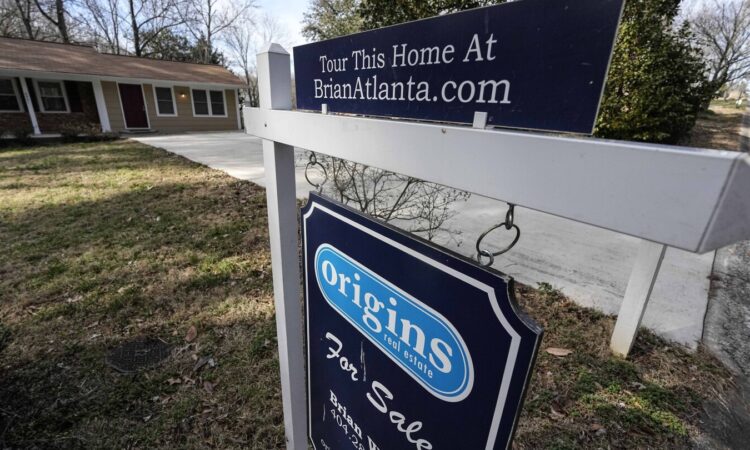
LOS ANGELES (AP) — Prospective homebuyers are facing higher costs to finance a home with the average long-term U.S. mortgage rate moving above 7% this week to its highest level in nearly five months.
The average rate on a 30-year mortgage rose to 7.1% from 6.88% last week, mortgage buyer Freddie Mac said Thursday. A year ago, the rate averaged 6.39%.
When mortgage rates rise, they can add hundreds of dollars a month in costs for borrowers, limiting how much they can afford at a time when the U.S. housing market remains constrained by relatively few homes for sale and rising home prices.
“As rates trend higher, potential homebuyers are deciding whether to buy before rates rise even more or hold off in hopes of decreases later in the year,” said Sam Khater, Freddie Mac’s chief economist. “Last week, purchase applications rose modestly, but it remains unclear how many homebuyers can withstand increasing rates in the future.”
After climbing to a 23-year high of 7.79% in October, the average rate on a 30-year mortgage had remained below 7% since early December amid expectations that inflation would ease enough this year for the Federal Reserve to begin cutting its short-term interest rate.
Mortgage rates are influenced by several factors, including how the bond market reacts to the Fed’s interest rate policy and the moves in the 10-year Treasury yield, which lenders use as a guide to pricing home loans.
But home loan rates have been mostly drifting higher in recent weeks as stronger-than-expected reports on employment and inflation have stoked doubts over how soon the Fed might decide to start lowering its benchmark interest rate. The uncertainty has pushed up bond yields.
The yield on the 10-year Treasury jumped to around 4.66% on Tuesday — its highest level since early November — after top officials at the Federal Reserve suggested the central bank may hold its main interest steady for a while. The Fed wants to get more confidence that inflation is sustainably heading toward its target of 2%.
The yield was at 4.64% at midday Thursday after new data on applications for unemployment benefits and a report showing manufacturing growth in the mid-Atlantic region pointed to a stronger-than-expected U.S. economy.
“With no cuts to the federal funds rate imminent and with the economy still strong, there is no reason to see downward pressure on mortgage rates right now,” said Lisa Sturtevant, chief economist at Bright MLS. “It seems increasingly likely that mortgage rates are not going to come down any time soon.”
Sturtevant said it’s likely the average rate on a 30-year mortgage will hold close to 7% throughout the spring before easing to the mid-to-high 6% range into the summer.
Other economists also expect that mortgage rates will ease moderately later this year, with forecasts generally calling for the average rate to remain above 6%.
Mortgage rates have now risen three weeks in a row, a setback for home shoppers this spring homebuying season, traditionally the housing market’s busiest time of the year.
Sales of previously occupied U.S. homes fell last month as home shoppers contended with elevated mortgage rates and rising prices.
While easing mortgage rates helped push home sales higher in January and February, the average rate on a 30-year mortgage remains well above 5.1%, where was just two years ago.
That large gap between rates now and then has helped limit the number of previously occupied homes on the market because many homeowners who bought or refinanced more than two years ago are reluctant to sell and give up their fixed-rate mortgages below 3% or 4%.
Meanwhile, the cost of refinancing a home loan also got pricier this week. Borrowing costs on 15-year fixed-rate mortgages, often used to refinance longer-term mortgages, rose this week, pushing the average rate to 6.39% from 6.16% last week. A year ago it averaged 5.76%, Freddie Mac said.






